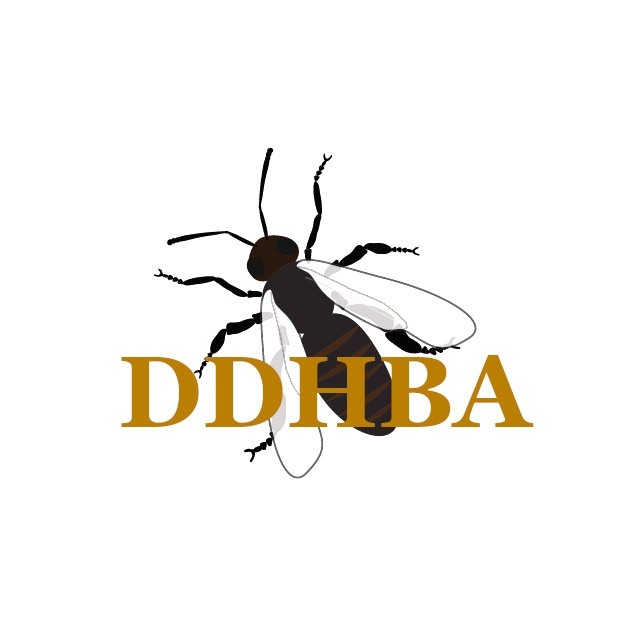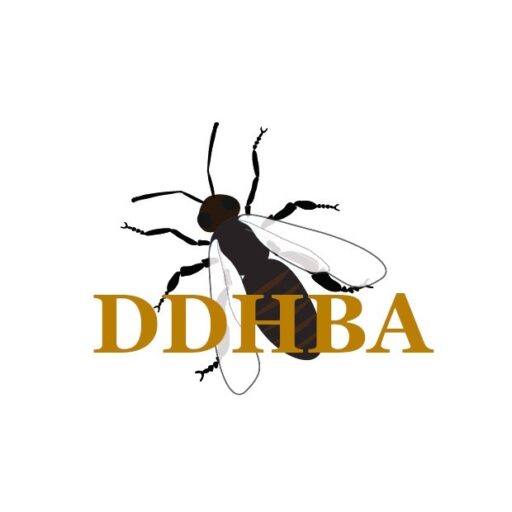Onderzoek
Jacques van Alphen Januari 2025. * The Downside of Selection: A Forgotten Cause of Honeybee Decline.
Jacques van Alphen Januari 2025. * The Downside of Selection: A Forgotten Cause of Honeybee Decline (met toestemming vertaald naar Nederlands).
Visick, Adams et al Juni 2024. * Do nest sites limit wild honey bee colonies? Decoding swarm waggle dances to assess nest site availability.
Derek Morville Mitchell. Mei 2024. * Are man made hives valid thermal surrogates for natural honey bee nests (Apis mellifera)?
J.J.M. van Alphen, J. Bouw. April 2024. * De status van de zwarte honingbij.
Pan et al. Maart 2024. * Dutch landscapes have lost insect-pollinated plants over the past 87 years.
Shanahan et al. januari 2024. * Thinking inside the box: Restoring the propolis envelope facilitates honey bee social immunity.
Kohl Patrick Laurenz. December 2023. * The buzz beyond the beehive: population demography, parasite burden and limiting factors of wild-living honeybee colonies in Germany.
Mats Niklasson et al. November 2023. * Free-living colonies of native honey bees (Apis mellifera mellifera) in 19th and early 20th century Sweden.
Derek Morville Mitchell. Oktober 2023. * Honeybee cluster – not insulation but stressful heat sink.
Oliver D. Visick, Francis L. W. Ratnieks. September 2023. * Density of wild honey bee, Apis mellifera, colonies worldwide.
Kathleen A. Dogantzis. November 2022. * Understanding the evolutionary origin and ancestral composition of honey bee (Apis mellifera) populations.
Borgelt et al. Juni 2022. * More than half of data deficient species predicted to be threatened by extinction.
Derek Morville Mitchell. Juni 2022. * Honey bee (Apis mellifera) size determines colony heat transfer when brood covering or distributed.
Erik Tihelka et al. Oktober 2020. * Mitochondrial genomes illuminate the evolutionary history of the Western honey bee (Apis mellifera).
Themudo et al. Juni 2020. * Declining genetic diversity of European honeybees along the twentieth century.
van Alphen & Fernhout. Juni 2020. * Natural selection, selective breeding, and the evolution of resistance of honeybees (Apis mellifera) against Varroa.
Requier et al. November 2019 . * Contribution of European forests to safeguard wild honeybee populations.
Derek Morville Mitchell. Mei 2019 . * Nectar, humidity, honey bees (Apis mellifera) and varroa in summer: a theoretical thermofluid analysis of the fate of water vapor from honey ripening and its implications on the control of varroa destructor.
Derek Morville Mitchell. Mei 2019 . * Thermal efficiency bee culture.
Derek Morville Mitchell. December 2018 . * Thermal efficiency extends distance and variety for honeybee foragers analysis of the energetics of nectar collection and desiccation by Apis mellifera.
Ellis et al. Mei 2018 . * Introgression in native populations of Apis mellifera mellifera L: implications for conservation.
Reemer. Maart 2018 . * Basisrapport voor de Rode Lijst Bijen.
Derek Morville Mitchell. Mei 2017. * Honey bee engineering: top ventilation and top entrances.
Parejo et al. December 2016. * Using whole genome sequence information to foster onservation efforts for the European dark honey bee Apis mellifera mellifera.
Munoz et al. November 2016. * SNPs selected by information content outperform randomly selected microsatellite loci for delineating genetic identification and introgression in the endangered dark European honeybee Apis mellifera mellifera.
Derek Morville Mitchell. September 2015. * Ratios of colony mass to thermal conductance of tree and man-made nest enclosures of Apis mellifera: implications for survival, clustering, humidity regulation and Varroa destructor.
Pinto et al. April 2015. * Genetic integrity of the dark European honey bee (Apis mellifera mellifera) from protected populations. A genome-wide assessment using SNPs and mtDNA sequence data.
Gulzar et al. Januari 2014. * Honey: Its History and Religious Significance: A Review.
Hudewenz en Klein. November 2013. * Competition between honey bees and wild bees and the role of nesting resources in a nature reserve.
Han et al. Juni 2012. * From where did the western honeybee Apis mellifera originate.
Peeters et al. Juni 2012. * De Nederlandse bijen Hymenoptera: Apidae S.L.
Miguel et al. April 2010. * Both geometric morphometric and microsatellite data consistently support the diffferentiation of the Apis mellifera M evolutionary branch.
M. Simone-Finstrom, M. Spivak. Februari 2010. * Propolis and bee health. The natural history and significance of resin use by honey bee.
Peeters en Reemer. Februari 2003. * Bedreigde en verdwenen bijen in Nederland (Apidae S.L). Basisrapport rode lijst.
Garnery et al. September 1998. * Genetic diversity of the west European honey bee (Apis mellifera mellifera and A. m. iberica).
L. Bailey. Mei 1963. * The “Isle of Wight Disease”: The Origin and Significance of the Myth.

